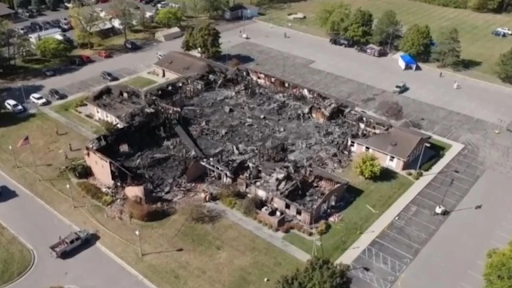Hurricane Milton, a Category 5 hurricane headed for Florida, has rapidly grown in strength since forming in the Gulf of Mexico. It is expected to hit Western Florida Wednesday night, with pressure that peaked at 897 millibars, and steady wind speeds peaking at 180 mph.
These combined stats make Milton the fifth most powerful storm to hit the Atlantic. It still hasn’t hit land, but it is gaining power as it moves across the Gulf toward Florida. Milton has rapidly intensified in power over the span of 24 hours on Monday the 7th. This is due to abnormally warm waters in the Gulf for this season. Half of the top 10 most powerful hurricanes formed in the last 20 years, marking a concerning trend as the effects of climate change begin to accelerate.
Milton is expected to cause as much as 15 feet of storm surge in the Tampa bay area, surpassing Helene’s flooding. It is also expected to pour down up to 18 inches of rain in western Florida, contributing even more to the extremely dangerous flooding concerns.
The pressure and wind speed of this storm makes it incredibly dangerous to be caught within, with concerns of flying debris and pressure exploding windows being top risks. Remaining debris from Helene hasn’t been cleared yet, leaving more out in the open to be used as ammunition by Milton’s destructive winds. The pressure of the storm is also even a risk to buildings with “storm-proof” windows, with its peak pressure matching many Category-5 rated windows’ capacity. The storm is expected to fluctuate before it makes landfall, but is still expected to be extremely hazardous.
Florida residents are still reeling from Hurricane Helene, with debris cleanup and search and rescue efforts that had just begun being halted to put more resources toward evacuation and prevention efforts. Flooding had just barely begun to recede before the news of Milton’s power reached residents, ready to come back and rebuild after Helene. Evacuation orders have been sent out, with many residents already away from their homes following Helene.
The trend of more frequent and more powerful hurricanes has been concerning in the last decade, especially for states along the Gulf of Mexico and the East Coast. Flooding has become more common in these areas as well with sea levels expected to keep rising in the coming decades. The increasing frequency and severity of these storms have also caused irreparable damage to coastal communities, with some never to be rebuilt or completely reclaimed by water. Climate change is the root of this issue, with changing ocean currents and increases in abnormal weather leading to more storms like Milton.
Insurance providers, in response to increasing hurricanes, have begun to stop offering their services in Florida, and the others that stay will charge enormous rates for property owners, as well as requiring additional flood insurance for those considered at risk of flooding.
With Milton rapidly approaching Florida, it’s going to be a difficult time for residents and the government during and after its catastrophic tear across the peninsula.





















